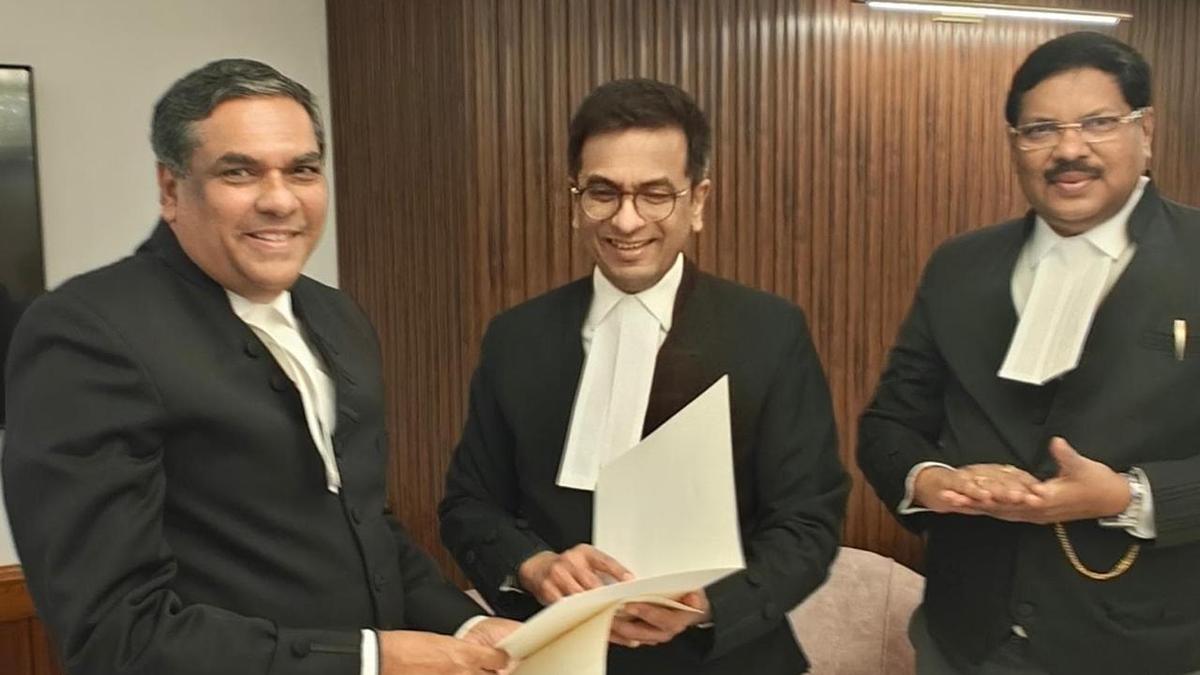Leaner, Faster, Fairer (GS Paper 2, Governance)

Introduction:
- The Indian judiciary is often criticized for its sluggish pace, with the term “Tareekh pe Tareekh” (meaning endless delays) symbolizing the slow progress of cases in courts.
- This delay has become a norm, diminishing public faith in the judicial system. However, with the arrival of a new Chief Justice of India (CJI), there is an opportunity to address these inefficiencies.
- The vision for a clear, efficient, and faster judiciary is now within reach, offering a chance to reduce case backlogs and restore faith in the legal process.
Opportunity with the New Chief Justice of India (CJI):
The appointment of the new CJI provides a significant opportunity to reform the judicial system. It is a moment to reimagine the way courts function and improve administrative practices. Former CJI Sanjiv Khanna had proposed several ideas to enhance the efficiency of the system:
- Measure Court Performance: Introduce systems to measure the performance of judges, categorizing them as high, average, or below-average performers, and offering positive reinforcement for high performers.
This approach could help improve productivity and incentivize good practices across the judiciary.
Current Challenges in the Judicial System:
Massive Backlog of Cases:
-
- 45 million cases are pending in the 688 subordinate courts, making up 85% of all pending cases in India.
- This enormous backlog severely hampers the ability of the judiciary to function effectively.
- Frequent adjournments further erode the faith of litigants, causing delays that stretch for years.
Administrative Inefficiency:
-
- A report from the Delhi High Court’s Zero Pendency Courts project revealed that 55% of a judicial officer’s day is spent on administrative tasks, leaving little time for judicial work.
- High adjournment rates: Nearly half of the 90 cases listed daily in district courts get deferred, reflecting poor time management and inefficient case-flow systems.
Inadequate Infrastructure:
-
- 21% shortage of judicial officers in district and civil courts.
- 27% shortage of non-judicial staff, with some states reporting up to 50% shortage in staffing.
- Limited implementation of e-filing and digitisation: Around half of the district courts lack video-conferencing facilities, which is crucial for speeding up hearings and connecting distant parties.
Judicial Officer Overload:
-
- Judicial officers are burdened with administrative duties, which hampers their ability to focus on substantive judicial work. This overload affects the timely disposal of cases.
Proposed Reforms and Strategies:
Learning from Successful Models:
-
- Cataract Blindness Project (1990s): In this initiative, retired and local personnel were enlisted for administrative tasks, allowing surgeons to focus on operations. A similar approach could be applied in courts by utilizing retired officials for administrative coordination, freeing judicial officers for case work.
- Delhi Magistrates Model (1960s): This model emphasized monthly performance reviews to track and encourage productivity. High Courts could adopt this approach to regularly review the performance of judicial officers, improving case disposal rates.
Temporary Administrative Staffing:
-
- Induct retired officials from large organizations like Indian Railways, Postal Services, or Indian Accounts Organizations.
- These retired officials can effectively manage administrative functions, reducing the burden on judicial officers.
Enhanced Case-Flow Management:
-
- Leverage existing High Court case-flow management rules to increase focus on timely disposal of cases. Regular monitoring and case tracking could help streamline the case-handling process.
Incremental Changes Without Structural Overhaul:
-
- Collaborative efforts between state law secretaries, High Court registrars, and district judges can help improve administrative processes.
- Additionally, involving top organizations to identify suitable retired administrative officers can boost efficiency without requiring drastic structural changes.
Potential Benefits of the Reforms:
- Streamlined Efficiency: Administrative burden on judicial officers can be reduced, enabling them to focus on adjudicating cases.
- Improved Case Disposal Speed: By increasing judicial efficiency, the time taken to resolve cases will be significantly reduced.
- Fairer Justice System: Faster disposal of cases ensures that justice is not delayed, contributing to a more equitable system.
- A Leaner and Faster Judiciary: These reforms can create a more responsive and efficient judiciary, ultimately benefiting litigants and the public.
Conclusion:
- The idea of inducting experienced outsiders (such as retired officials) to handle administrative tasks within the judicial system may seem radical at first.
- However, it is a practical solution to optimize judicial efficiency.
- The potential outcomes—a streamlined, expeditious, and equitable justice system—make this a worthwhile pursuit.
- As the judiciary embraces these changes, it could herald a new era of justice in India, one that is not bogged down by delays but is instead leaner, faster, and fairer for all.


